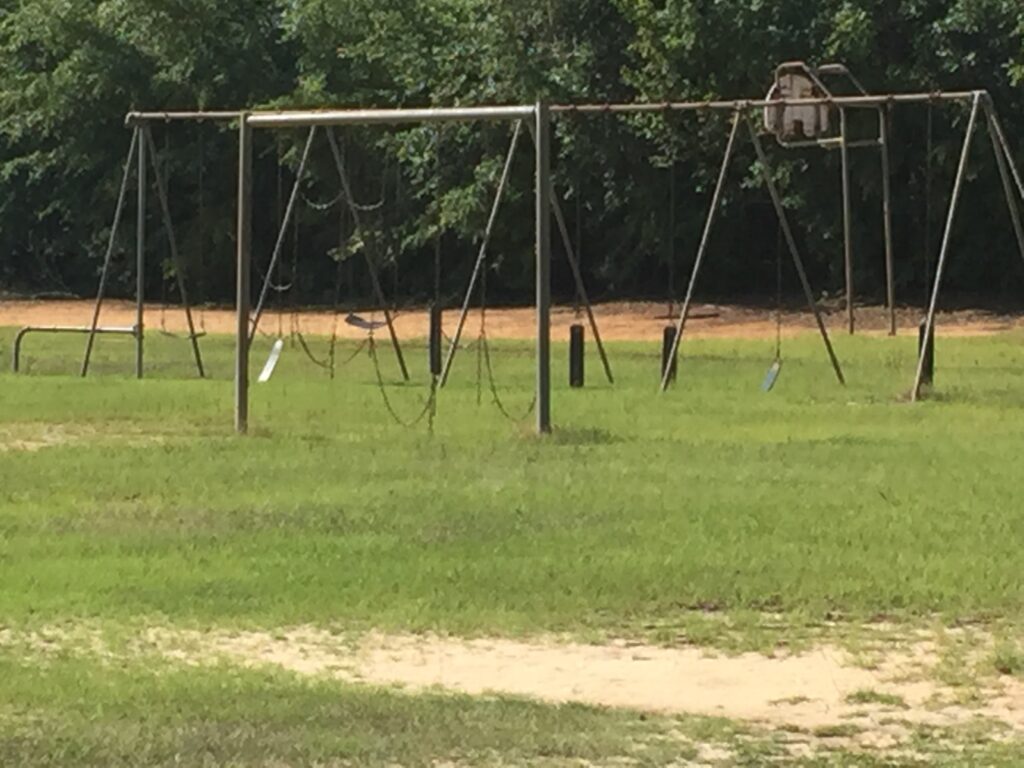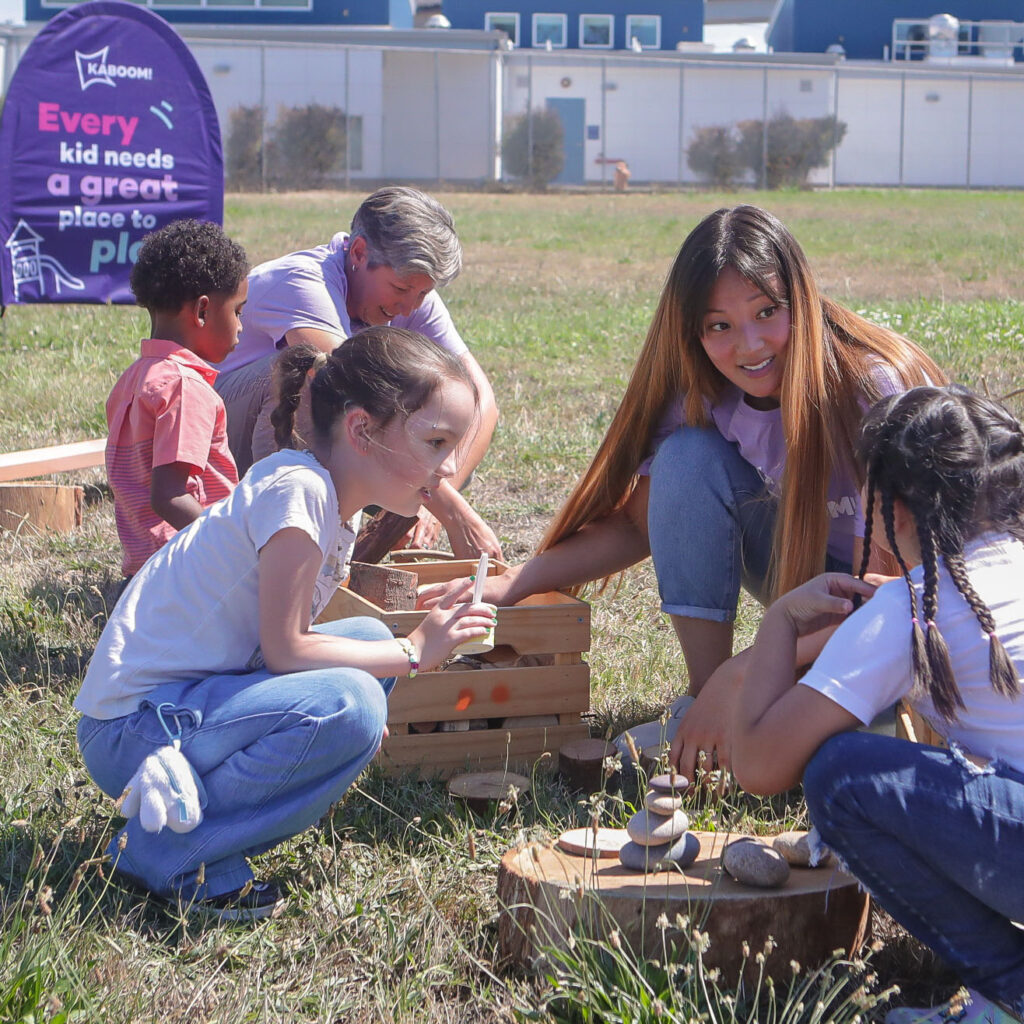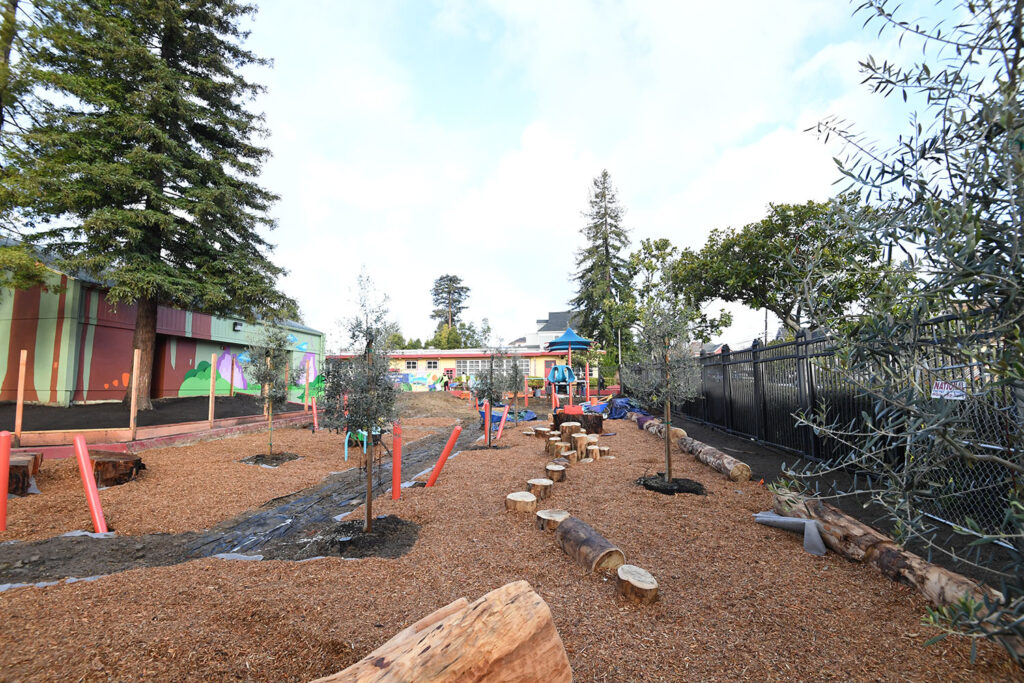Why playspace equity and climate justice are intertwined a personal reflection from Lysa Ratliff.
Nearly a decade ago, on a scorching summer day in Blackville, South Carolina, I met Breyanna, a young girl at her school where I was helping build a new library.

As we bonded, she took my hand and led me outside in the 102-degree heat to show me something important. Her playground was broken, the equipment damaged and too hot to use for long stretches of the year.
The sight was disheartening: metal slides burning in the sun, crumbling black rubber swings, and asphalt radiating heat, with not a sliver of shade in sight. The space felt barren, lifeless.
We love what you’re doing but more than anything, we want to go outside to play. It’s too hot, and the playground is broken.”
Breyanna
Her words struck me deeply. I was focused on literacy, but in that moment, I realized that I was in the dark on another critical issue—together with disinvestment, the climate crisis was robbing kids like Breyanna of something as simple as play. Though I had dedicated my life to helping kids and their families, it wasn’t until that August day with Breyanna that I truly looked at the needs of a child through their eyes. Despite the unbearable heat, she wanted to go out and run free. Two months later, I started working at KABOOM!.
At Climate Week 2024 this September, I will be meeting with national leaders and partners to share KABOOM!’s vision for using play infrastructure to help address the causes and effects of climate change in a more equitable manner that focuses on the communities where these critical issues intersect.
The inequities are clear: while children in well-resourced communities enjoy air-conditioned classrooms and play outside in shaded, well-equipped playspaces, others face the brunt of climate injustice every day. In formerly redlined neighborhoods, for example, kids experience temperatures 4.6°F warmer than in non-redlined areas. Black and Brown communities also have fewer natural spaces such as forests, streams, and wetlands nearby that provide refuge from heat and provide families with countless mental and physical health benefits.
Greening civic infrastructure like playgrounds is one solution to these overlapping issues. Relatively fast and cost-effective, green playspaces can bring a range of benefits from boosting access to nature to addressing urban heat islands and improving air quality.
Blackville, like many underserved communities, can’t address these issues alone. It takes external support from a range of partners committed to climate justice, ensuring that all children, regardless of where they live, can access safe, green spaces to play, even in the face of rising temperatures and environmental injustices.

To realize this possibility, our work at KABOOM! has to be much different. Not only do the rising temperatures require us to build with shade that will reduce the temperature of the playspace and surrounding footprint, but our commitment to addressing our climate along with the needs of our children requires thought and care at every step. We must become even more responsible with the products we use, and we must design in a way that transforms unusable, barren spaces to green, well-shaded places of exploration and joy for the well-being of our children and the planet they are inheriting.

I checked in on Breyanna last week. Now a junior in high school, she is top of her class, cheerleads, plays volleyball and basketball and was just offered a track and field scholarship to college in Florida. Breyanna is also a fierce advocate for kids and is committed to making her mark on the world so future generations can thrive.
I took several photos of the playground in Blackville that day. They hang on my office wall and fuel my commitment to solve playspace inequity, but they’re also a reminder of who and what we are accountable to in all of our actions. My dream for kids like Breyanna is that they have outdoor oases of play and exploration – filled with greenery, life, shade, and laughter.
We all have a role to play in protecting our environment so that our kids inherit a livable planet. It’s up to us to come together and take action to ensure a greener future for generations of kids and communities.
Join us on this journey, because we can’t do this ambitious work alone.
